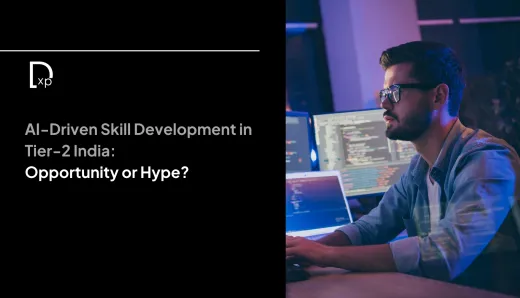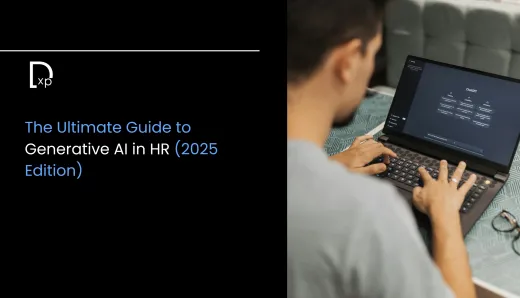SEA Talent Teams vs. Generative AI: Toolkits, Tensions & Wins

There’s a real tension in the market right now. HR leaders across Southeast Asia are asking the same thing: what wins: human-driven talent teams or fully automated generative AI solutions? And more importantly, where does HR automation fit in when real people are hiring real people in real time?
The noise around generative AI is at an all-time high. VCs are throwing billions at startups with AI-first hiring platforms. Analysts are tracking the shift from traditional talent acquisition to smart, data-led HR automation models. But what’s not being talked about enough is this; the human cost and human value. Not everyone wants a bot to decide their next job or their next team member.
SEA is unique. This region has young, fast-scaling companies, hungry unicorns, and a deep reliance on local networks. So the question is, can generative AI actually replace the cultural understanding, the market nuance, and the instinct of SEA talent teams? Or is the future a more tactical balance?
The Talent Playbook in SEA Isn’t Generic
You can’t take a Silicon Valley hiring model and drop it into Jakarta or Manila. It just doesn’t work. Recruitment in SEA is deeply relationship-based. It depends on industry-specific insight, language cues, and a very personal understanding of ambition and fit.
I spoke to Clara, a senior HRBP at a fintech in Kuala Lumpur, who put it this way: “A resume can’t tell me what kind of startup pain someone can handle. No AI can judge loyalty from a 10-minute video interview.”
She’s not wrong. Talent teams here don’t just filter candidates. They build founder-ready teams, often from scratch, in markets that shift every 6 months. They need speed, but they also need story. AI doesn’t always get that.
But Generative AI Is Not a Gimmick
Let’s be real. AI is not just another buzzword. It’s already reshaping HR operations from end to end. From smart resume parsing to predictive attrition analysis, the pace at which AI is streamlining HR automation is insane.
Take InterviewGPT. It’s being tested in Singapore-based firms to conduct pre-screen interviews and score soft skills using facial analysis. Or Workera, which is now deployed by tech firms in Vietnam to auto-map talent capability frameworks and generate upskilling paths with zero manual input.
It’s impressive. And it’s here. But here’s the catch; not every HR team is ready to go fully automated. There’s a trust gap. There’s a risk of overfitting candidates into roles based on pattern recognition, not potential.
Tensions That Can’t Be Ignored
There’s a lot of HR automation tooling out there promising faster decisions. But the trade-off is depth. A recruiter in Bangkok I spoke to said they lost a top candidate because the AI dropped her based on “weak leadership signals.” She was later hired by a competitor and scaled their engineering team in six months.
This is the real tension. Generative AI is great at processing. But it’s bad at context. And in SEA, context is everything.
There’s also internal tension; HR heads being pushed to cut costs with automation, while their teams fear losing the human edge. VCs want to back AI-forward startups, but what they still ask for during due diligence is “strong founding teams.” Not AI reports. People.
Wins That Can’t Be Ignored Either
Now let’s flip the lens. There are wins. Big ones. A logistics startup in Ho Chi Minh automated its entire talent pipeline using HR automation and saw a 35% increase in qualified hires within 60 days. No ghosting. No manual follow-ups. It just worked.
In the Philippines, a healthtech brand deployed AI onboarding flows that cut training time in half. For roles with high churn, this was a game-changer.
Even more impressive? A Singapore-based HR consultancy layered generative AI into their DEI playbook. They used AI to audit job descriptions for bias and built inclusive candidate pools without months of manual curation.
These are wins you can’t ignore. The power of AI is real. But it needs the right operators behind it.
So What’s the Toolkit That Actually Wins?
Here’s what it looks like. You don’t choose between SEA talent teams and AI. You design a hybrid. You give your recruiters tools that use AI to filter noise, but you let them own the conversation. You automate scheduling, pre-screening, and data gathering. But you keep decision-making human.
HR automation works best when it’s not replacing people, but arming them. A human-led, AI-enabled hiring stack. That’s what’s driving real wins across SEA right now.
Mark, a VC partner based in Jakarta, told me this: “Founders with the best hiring velocity have a stack that respects the complexity of this region. They use AI to buy time. Then they spend that time hiring right.”
Final Thought: It’s Not Either-Or
This is not a debate. It’s a reset. SEA companies have a chance to shape a new talent paradigm, one where HR automation is used not to cut corners but to double down on quality.
Generative AI will never know what it’s like to hire a GM in Jakarta during election season. But it can tell you who might be 80% of the way there, and let your recruiter close the loop.
Talent teams are not obsolete. They’re being upgraded. The ones who win will master both tools and instincts. They’ll know when to automate and when to pick up the phone.
This isn’t about fearing AI. It’s about mastering it. In a region that demands both speed and nuance, the only way forward is both.




